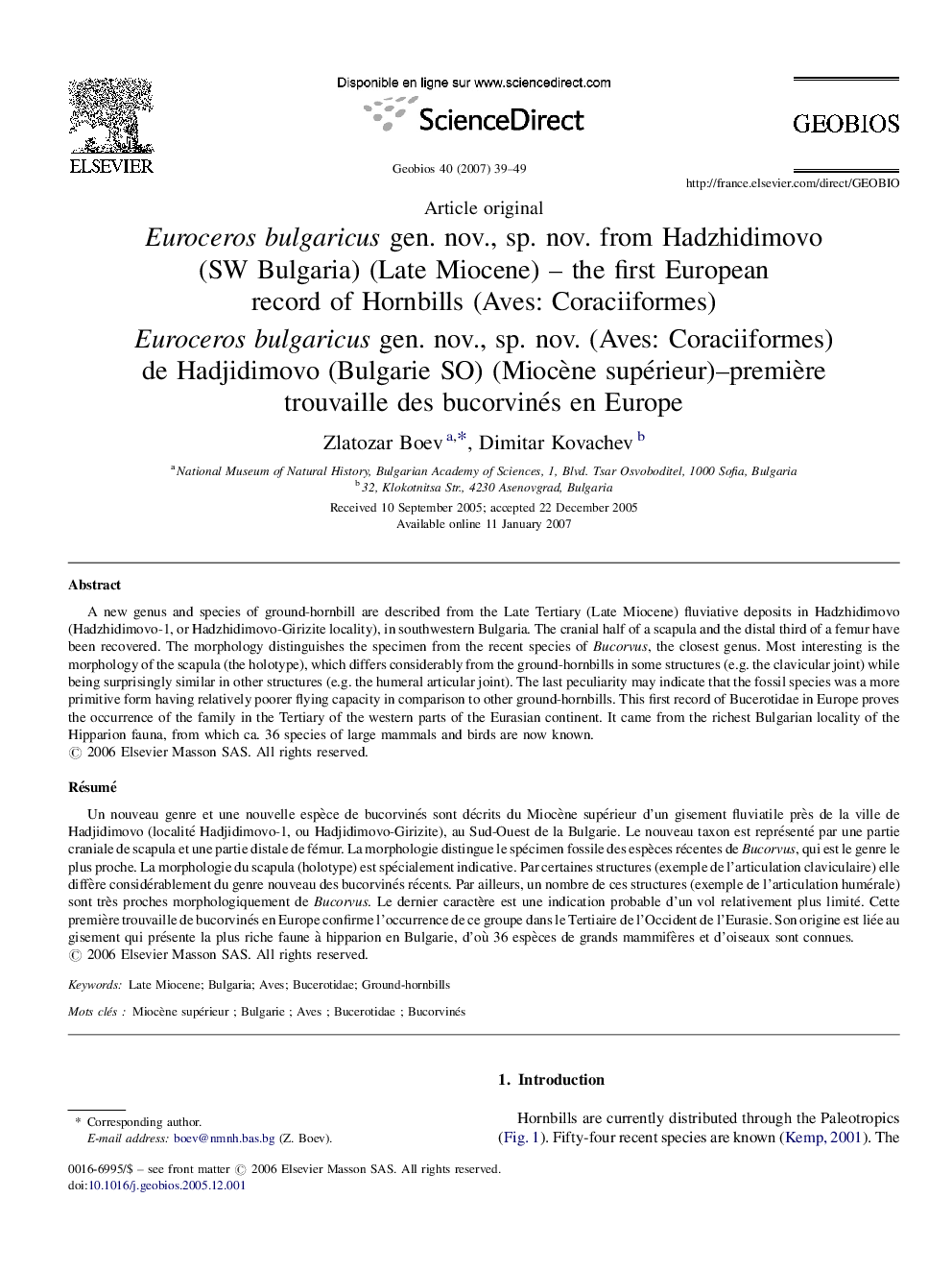| کد مقاله | کد نشریه | سال انتشار | مقاله انگلیسی | نسخه تمام متن |
|---|---|---|---|---|
| 4748705 | 1360139 | 2007 | 11 صفحه PDF | دانلود رایگان |

A new genus and species of ground-hornbill are described from the Late Tertiary (Late Miocene) fluviative deposits in Hadzhidimovo (Hadzhidimovo-1, or Hadzhidimovo-Girizite locality), in southwestern Bulgaria. The cranial half of a scapula and the distal third of a femur have been recovered. The morphology distinguishes the specimen from the recent species of Bucorvus, the closest genus. Most interesting is the morphology of the scapula (the holotype), which differs considerably from the ground-hornbills in some structures (e.g. the clavicular joint) while being surprisingly similar in other structures (e.g. the humeral articular joint). The last peculiarity may indicate that the fossil species was a more primitive form having relatively poorer flying capacity in comparison to other ground-hornbills. This first record of Bucerotidae in Europe proves the occurrence of the family in the Tertiary of the western parts of the Eurasian continent. It came from the richest Bulgarian locality of the Hipparion fauna, from which ca. 36 species of large mammals and birds are now known.
RésuméUn nouveau genre et une nouvelle espèce de bucorvinés sont décrits du Miocène supérieur d’un gisement fluviatile près de la ville de Hadjidimovo (localité Hadjidimovo-1, ou Hadjidimovo-Girizite), au Sud-Ouest de la Bulgarie. Le nouveau taxon est représenté par une partie craniale de scapula et une partie distale de fémur. La morphologie distingue le spécimen fossile des espèces récentes de Bucorvus, qui est le genre le plus proche. La morphologie du scapula (holotype) est spécialement indicative. Par certaines structures (exemple de l’articulation claviculaire) elle diffère considérablement du genre nouveau des bucorvinés récents. Par ailleurs, un nombre de ces structures (exemple de l’articulation humérale) sont très proches morphologiquement de Bucorvus. Le dernier caractère est une indication probable d’un vol relativement plus limité. Cette première trouvaille de bucorvinés en Europe confirme l’occurrence de ce groupe dans le Tertiaire de l’Occident de l’Eurasie. Son origine est liée au gisement qui présente la plus riche faune à hipparion en Bulgarie, d’où 36 espèces de grands mammifères et d’oiseaux sont connues.
Journal: Geobios - Volume 40, Issue 1, January–February 2007, Pages 39–49